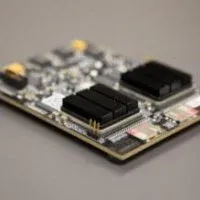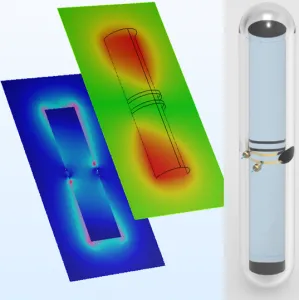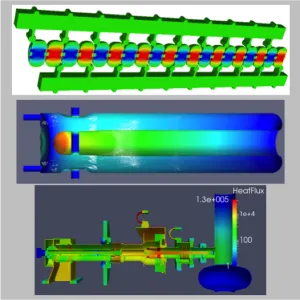Communication

TID leverages RF accelerator technology to explore applications across the frequency spectrum from VLF to the millimeter-wave regime with numerous communications applications.
Key Competencies

Low Level RF Design
System level RF conceptual design and architecture starting from physics requirements through hardware implementation. Algorithm development and firmware implementation of feedback and signal generation and processing. Design of board level high frequency, low noise, broadband and high dynamic range RF systems. Low phase noise RF sources, measurement and feedback systems.
mm-Wave/THz
An underutilized portion of the electromagnetic spectrum that holds great promise for unique applications in communications, remote sensing, spectroscopy and accelerator technology. We are developing both the sources and exploring applications in this frequency range using our unique electromagnetic simulation tools, fabrication and test facilities.

Piezoelectric Devices
TID has expertise in the design, characterization, and implementation of piezoelectric devices. Supported by multiple DARPA-funded projects, we use this technology to push the boundaries of high-gradient acceleration as well as high-Q antennas. SLAC has multiphysics optimization tools, strength and velocity characterization equipment, high-vacuum expertise, and strategic partnerships with industry leaders in piezoelectric single-crystal manufacturing and characterization. In addition, SLAC utilizes the suite of manufacturing and characterization facilities at Stanford such as the Ginzton Crystal Shop to support rapid prototyping and characterization.
RF Sources (Design, Fabrication & Testing)
RF sources are a key driver the size and performance of accelerators, radars, telecommunications systems and satellite platforms. The SLAC TID team is uniquely qualified to bring the novel vacuum electronics (VEDs) concepts to experimental validation. The demonstration of VEDs requires the development and integration of a variety of technology maturity levels, combining fundamental research with the unique facilities and capabilities of a National Laboratory with a longstanding reputation for RF source development.

Very Low Frequency Sources
TID is pushing the boundaries of Very Low Frequency (VLF) transmitters. In particular, a DARPA-funded project aims to reduce the size, weight, and power consumption of man-portable VLF transmitters by an order of magnitude. To do so, we draw upon expertise in high-Q electronics, advanced manufacturing, material characterization, and multi-physics modeling.
Virtual Prototyping/ACE3P
SLAC’s parallel multi-physics simulation suite ACE3P employs 3D finite element methods on curved conformal unstructured meshes with high-order field representation for integrated electromagnetic, thermal and mechanical modeling. Executing on state-of-the-art massively parallel computers, ACE3P allows large-scale, high-fidelity simulations of realistic structures with unprecedented accuracy.

